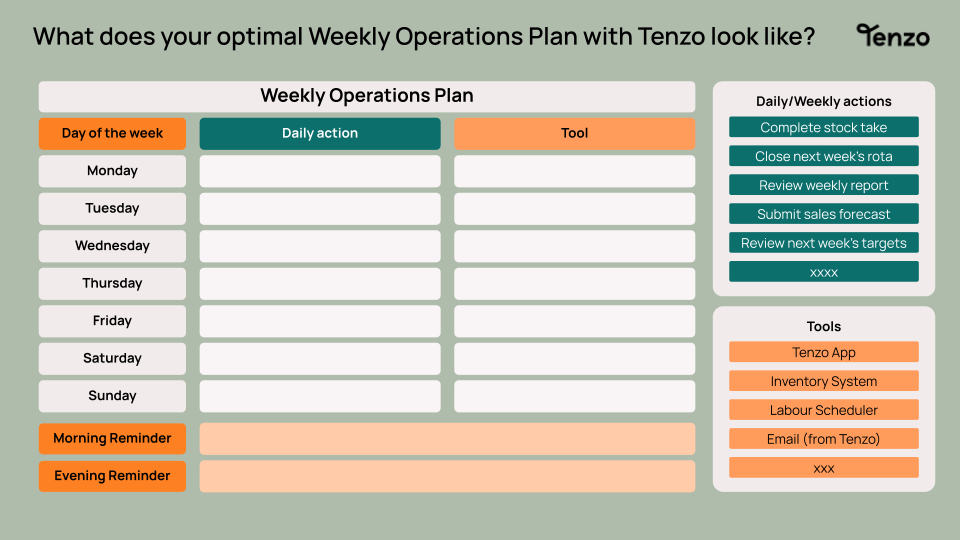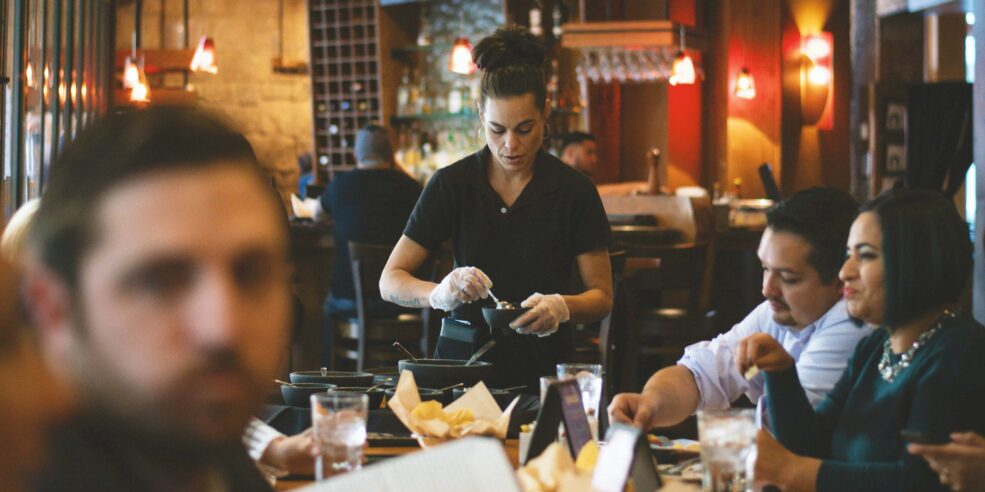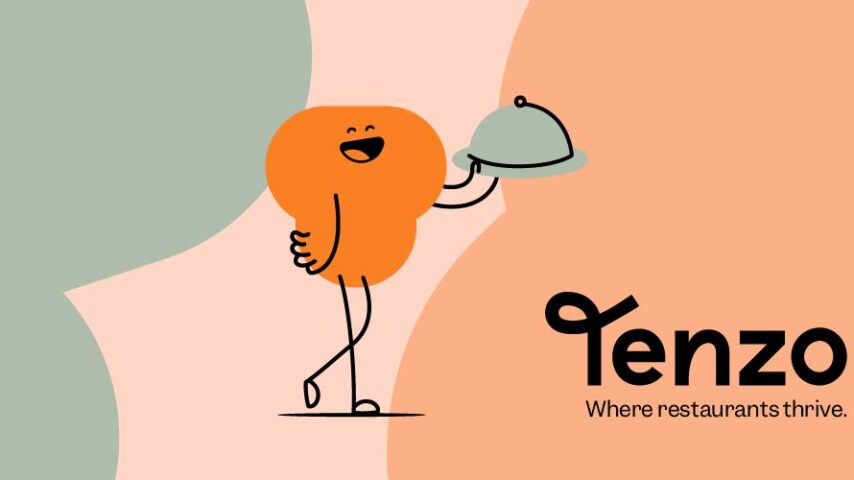In this article
Forecasting future demand is one thing all restaurateurs wish they could get 100% accurate every time. If you always know exactly how many covers to cater for or how many meals you’ll make in advance, staffing, ordering, and prepping becomes a breeze.
However, while forecasts can’t be 100% accurate all of the time, they can give you a much clearer idea of what the future holds and can help you plan accordingly.
In this piece, we’ll cover why forecasting is helpful in restaurants, what challenges you may encounter, the main forecasting methods, and how to effectively use your forecast.
Why is forecasting important in restaurants?
There are two main reasons that restaurants invest in forecasting: staff and stock. It’s important to state that most forecasts will deliver a sales forecast for a site and for a day. It’s then up to general managers to work backwards and see how that number affects stock and staff.
Stock
The main benefit of forecasting in terms of stock ordering is to help reduce waste. Millions of tonnes of food waste are thrown away every year and that has a huge impact on both the environment and the bottom line. Knowing how many guests to expect as well as the average sales attachment for each of your dishes can help restaurants order the right quantity of ingredients to avoid throwing away unused food or potentially running out of popular items.
If your forecast can get more granular (say hourly or by item), then it can also help prep food to make service faster. However, this granular level of forecasting is not an option unless you have a vast amount of historical data and a very streamlined menu. For example, McDonald’s can likely forecast hourly and by item but small chains with varied menus simply will not have access to the sheer quantity of data points needed to do this. However, an alternative to this might be forecasting categories rather than individual items eg how much steak you may need or how much fish.
Labour
You can achieve far more by using forecasts to help with labour scheduling. There’s nothing worse than having too few people available for an unexpectedly busy service or having to send people home when it’s too quiet.
By using forecasting, businesses can have a clearer idea of what to expect in advance and use that information to schedule the right number of people. This helps control costs by keeping to a target labour budget and gives team members more predictability when it comes to what shifts they’ll be working.
It also helps to understand whether more team members may mean more sales. If you’re going to be busy, being able to turn tables quickly keeps customers happy and sales streaming in. This also improves the customer experience by giving them seamless service, not having to wait for their drinks, bills, etc.
Challenges that come with forecasting in restaurants
While forecasting may sound like a perfect solution for any inefficiency, there are several challenges that make it difficult for operators to get accurate forecasts. Firstly, there are many variables that impact demand daily. Some businesses benefit from bank holidays or school holidays, while others don’t. Weather can affect one business much more than another. Events can have big impacts in very different ways.
Unfortunately, even within the same brand different sites will be impacted by variables in different ways. This needs to be taken into account when creating forecasts, which means businesses need to have enough historical data to understand how the variables affect them.
Secondly, forecasts can have a ‘black box’ effect. This means that the number can appear to be plucked out of thin air rather than with clear reasoning. This can make the forecasts hard to trust. If a GM sees a number that doesn’t match with what they expect without any reasoning behind it, integrating it into operational processes can be extremely difficult.
What are the main forecasting methods for restaurants?
Financial targets or budgets
The simplest method for forecasting is using financial budgets. The finance team usually creates these budgets by looking at previous years’ performance and extrapolating. This is relatively simple to do and gets the full team aligned to a number.
The problem we usually see with these types of forecasts is that it’s not very accurate. It’s usually a static number for the year that is then divided by months, weeks and days to give a daily forecast that doesn’t take the natural fluctuations in demand into account. Added to this, these forecasts tend to fall into the stretch target category rather than realistic forecasts. That then leads to over-ambitious ordering and staffing and a lot of waste.
If you are using yearly financial budgets to forecast, layering them with real data trends to allow for fluctuations in demand can help make them much more accurate.
In a recent webinar, Tenzo user and Director of Angelina, Joshua Owens-Baigler, stated, ‘we have so much historical data that we can pull and […] looking at statistics and at software, has enabled us to do is make really smart decisions regarding finding patterns even amongst the madness.’
Tenzo’s budget tool allows you to upload a budget for the year or month that then takes your historical data into account and breaks it down into daily targets. Get in touch to find out more!
Gut-based forecasting
One of the most common forecasting methods we’ve seen, this relies on your General Manager’s gut instinct for what demand will look like. We have seen some General Managers who have a deep understanding of their site and can make incredibly accurate demand forecasts that have the site running like a well-oiled machine. However, we have also seen others who don’t have this same knack which is where issues crop up.
The problem with a gut-based system is that efficiency will vary wildly between locations based on how skilled that location’s GM is. This leaves a lot of opportunity on the table for controlling costs and waste.
A rolling 4-week average
Many businesses use either a 4-week or 5-week rolling average to forecast their future sales. This involves taking an average of the same day over the last 4 or 5 weeks to predict what this week will look like. In theory, it works well, but this is where the variables we mentioned earlier pose their real challenges.
A 4-week average can be thrown off considerably by holidays or events. For example, if Valentine’s Day falls on a Tuesday, demand for the next 4 Tuesdays will be overestimated. The same thing happens with school holidays, big sporting events, extreme weather or any other number of factors that affect sales.
Using this method also only really gives you a week’s notice for future demand. That means that staff schedules aren’t set in stone until a few days before shifts, leading to unpredictability and unhappiness.
According to Will Meadows, VP of User Experience at Planday, ‘One of the main reasons for unhappiness or affected wellbeing is the inability to plan ahead. ‘Am I going to have enough work coming in? Am I going to be able to go on a trip with my friends? Or am I going to get that surgery done?’ So if you can really plan ahead, or at least give people some visibility of what their shifts might look like it can make a huge difference to your team.’
AI forecasting
AI forecasting is the most sophisticated method of forecasting. If you have the historical data for the machine learning algorithms, it can be highly accurate because it can layer in the variables to understand how each affects your business.
At Tenzo, we take your historical data alongside weather, events, holidays and the fluctuation of seasons to give you the most accurate prediction we can. However, we know that there will always be things that an algorithm won’t know like roadworks outside or a promo you’re running. We therefore think of our forecast as a starting point and allow users to adjust them based on their own knowledge.
By giving teams a starting point, showing what sales looked like last year on the equivalent day, last week as well as any special events or weather, we give them a contextualised starting point to go off. Tenzo alone has been proven to improve forecasts by 25%, but Tenzo combined with GM knowledge increases that to 30%.
How to make the most of your forecast
Buy-in from your team
Getting your team on board with a forecasting process is absolutely critical. Explaining how the forecasts are made, regardless of method, goes a long way in creating trust. It’s also worth explaining that forecasts aren’t right every time, but using them to make decisions will always help steer in the right direction.
Giving the team access to a reporting tool so they can better understand past demand also ensures that they can dive into the data if they want to. This allows them to better learn how a sales forecast will translate to hours or people needed or potential ingredients to order.
Embed forecasting in your operational process
While it can be frustrating at first, working the forecast into weekly meetings and operational flows helps encourage the use of forecasts to make decisions. At Tenzo, we encourage teams to have a specific cadence set to approve forecasts, do stock check and order new inventory, sign off on the next 2 weeks of labour schedules, and review targets. That way everything waterfalls off the forecast.

Incorporate your forecast into other tools
We know it can be frustrating for busy managers to have to switch between their forecasting tool, their labour tool, and their inventory management especially when all these tools give you different forecasts or targets. The trust is completely eradicated when you have 3 systems telling you 3 different numbers.
To solve this problem, Tenzo will surface your forecast in your labour scheduler and your inventory management platform giving a dependable and trustworthy number for your team to work to.
To find out which platforms allow this two-way integration, speak to a member of the Tenzo team.
Conclusion
Demand forecasting is a great tool to have in the restaurateur’s tool belt. It doesn’t have to include machine learning or complex algorithms, there are other methods to use and not all methods suit everyone. However, the more accurately you can predict what your future demand will be, the more you can control costs and eliminate inefficiencies.
If you’re looking to introduce forecasting into your business, get in touch to see if Tenzo is right for you!





